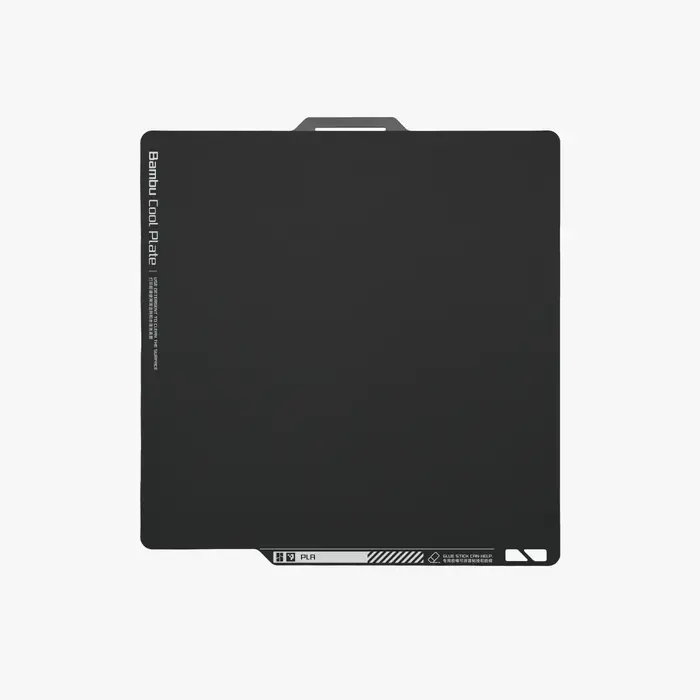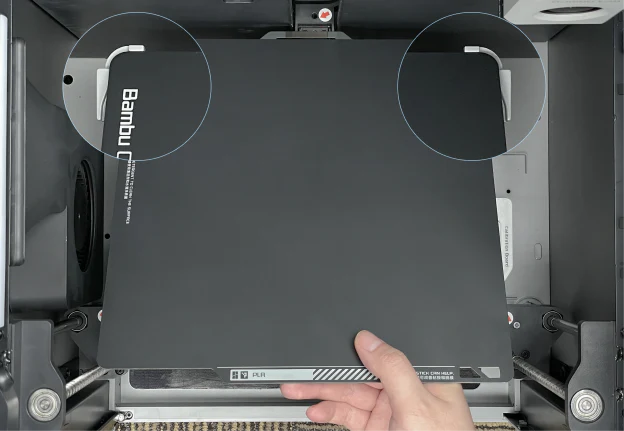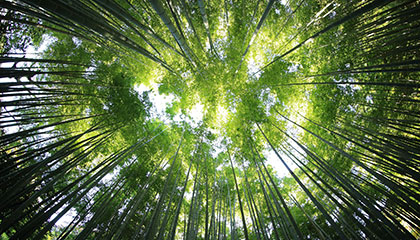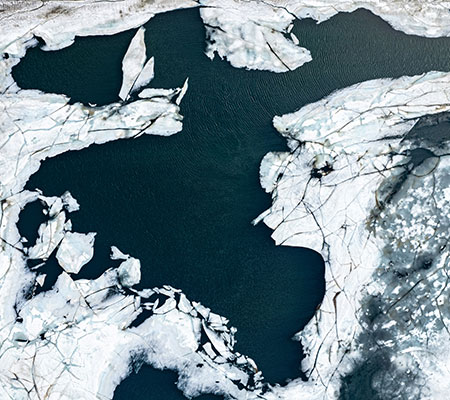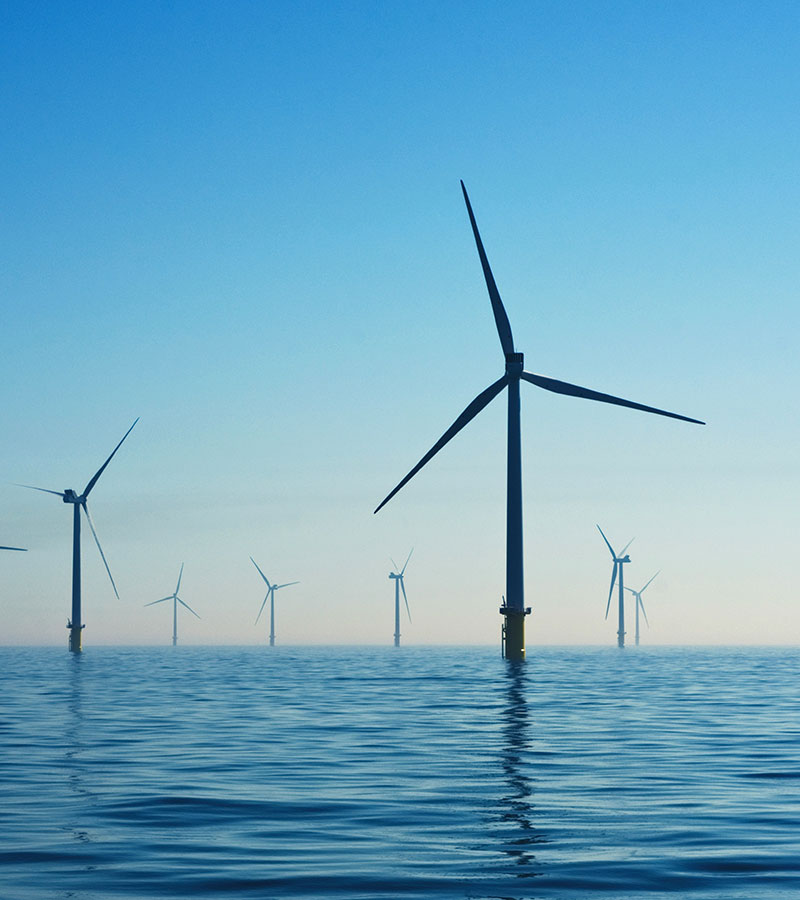
One side: Bambu Cool Plate= Cool plate sheet + Bambu Engineering Plate
The other side: Bambu Engineering Plate
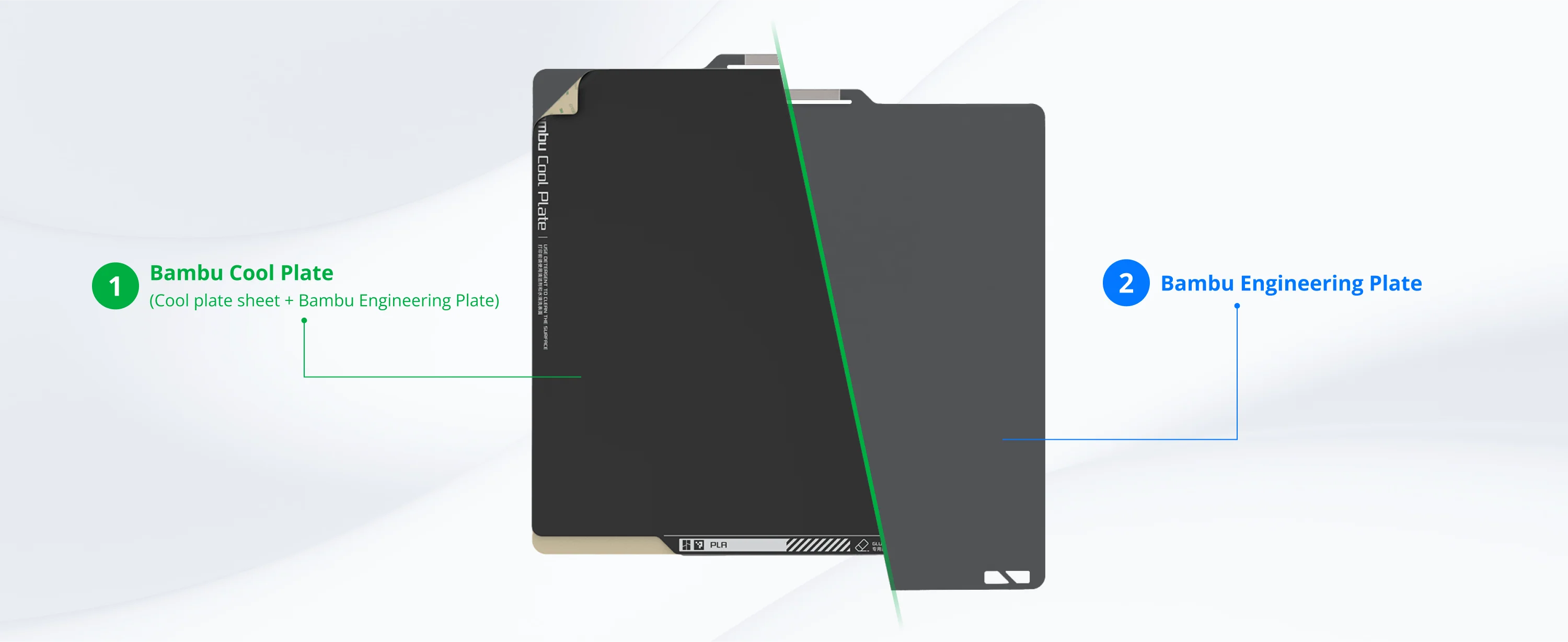
1. Bambu Cool Plate
Please note that other slicer settings might need to be adjusted based on the printed model and the filament requirements
| Material | Heatbed Temperature | Glue Stick Required? | Upper Glass Cover Plate Removed? |
| PLA/PLA-CF/PLA-GF | 35~45℃ | Yes | Either |
| TPU | 30~35℃ | Yes | Either |
| PVA | 35~45℃ | Yes | Either |
Benefits
Works best with low glass transition temperature filaments as it can be used at a low temperature for the heatbed
Works well with the Automatic Calibration for Flow rate and does not interfere with the LIDAR
Smooth texture on the surface of the print
Excellent adhesion and easy print removal
Can be replaced by the user
Downsides
Cannot be used without glue stick as the surface can be easily damaged if glue stick is not used
It is not recommended for high-temperature materials as bubbles can form underneath the print surface and cause damage
Can be more fragile compared to the Engineering Plate or Textured PEI Plate
2. Bambu Engineering Plate
Please note that other slicer settings might need to be adjusted based on the printed model and the filament requirements
| Material | Heatbed Temperature | Glue Stick Required? | Upper Glass Cover Plate Removed? |
| TPU | 30~35℃ | Recommended | No |
| PETG | 70~80℃ | Recommended | Yes |
| ABS | 100~110℃ | Yes | No |
| PC/PC-CF | 100~110℃ | Yes | No |
| PA/PA-CF/PATH-CF | 100~110℃ | Yes | No
|
Installation Steps
Step 1: Align the plate with the fixed points of the platform with the name of the plate facing you
Step 2: Lower the plate and secure to the magnetic platform
Product Specification
| Surface temperature resistance | Up to 120℃ | Usable print size | 256*256 mm |
| Flexible spring steel thickness | 0.5 mm | Cool Plate sticker thickness | 0.4 mm |
| Package Weight | 320 g | Package size | 290*290*4 mm |
Bambu Lab X1 Cool Plate in Pakistan



